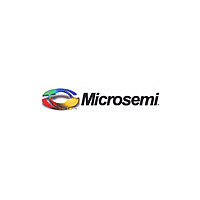AFS090-FGG256I Microsemi, AFS090-FGG256I Datasheet - Page 3

AFS090-FGG256I
Manufacturer Part Number
AFS090-FGG256I
Description
afs090 series 27 kb ram 90k system gate prototyping...
Manufacturer
Microsemi
Datasheet
1.AFS090-FGG256I.pdf
(4 pages)
Available stocks
Company
Part Number
Manufacturer
Quantity
Price
Company:
Part Number:
AFS090-FGG256I
Manufacturer:
Microsemi SoC
Quantity:
10 000
Prototyping With AFS600 for Smaller Devices
List of the Guidelines for Prototyping
Actel recommends AFS600-FG256 as the platform for prototyping smaller devices within the same
compatible package type. AFS600-FG256 is also the first available Fusion silicon in the rollout road map
and is used in the Fusion Starter Kit, which can serve as a prototype board to demonstrate the majority of
Fusion features.
Memory Blocks
The AFS250 and AFS090 have a single 256-kbyte block of embedded Flash memory, whereas the AFS600
has two 256-kbyte blocks (512 kbytes total). Therefore, the user must keep the usage less than 256 kbytes
while doing prototyping with the AFS600.
The AFS250 has 8 RAM blocks, while the AFS600 has 24 RAM blocks. A SmartGen analog system generated
soft IP uses 3 to 9 blocks of RAM. The user needs to keep track of the RAM block usage, especially if the
design contains a RAM initialization application, data storage application or other applications that utilize
extra RAM blocks. Usage must be no more than 8 blocks. Likewise, if the user is prototyping for AFS090,
then the RAM block usage in AFS600 should not exceed 6 blocks.
PLLs
The AFS250 and AFS090 have one PLL on the west side of the device, whereas AFS600 has two PLLs—one
for each side of the device. During prototyping using AFS600, the user should only implement the PLL on
the west side and use the corresponding PLL input pin, so that the delays from the PLL input through the
PLL to the global network have a minimum variation between AFS090/AFS250 and AFS600.
I/Os
All special function I/Os (V
, GND, JTAG, Programming Control, etc.) of the AFS250 and AFS090 devices
CC
are in exactly the same locations as in the AFS600 device, with one exception for the AFS090 as listed
below. The AFS250 device has 6 Analog Quads, whereas the AFS600 device has 10 Analog Quads. The user
should only use Analog Quads 0–5 while doing prototyping in AFS600, in order to have exactly the same
analog pin map. To prototype AFS090, the user should only use Analog Quads 0–4, since AFS090 has 5
Analog Quads.
While the AFS250 differential I/Os have the same locations as the AFS600, the AFS090 differential I/O
locations are slightly different from those of the AFS600. More details on the pin list are available in the
Fusion
Datasheet. The user should be aware that if the design has differential I/Os, the pinout needs to be
changed from the AFS600 prototype design to an AFS090 production design.
Prototype Consideration in Software
®
After validating the design in the AFS600, the user needs to create a new Actel Libero
Integrated Design
Environment (IDE) project for the AFS090 or AFS250, then recreate the SmartGen cores by using the same
parameters used for the AFS600. All other source code used in the AFS600 project can be directly imported
into the AFS090 or AFS250 project. The same validation process (simulation, static timing analysis, and
functional test on silicon) should be performed for the AFS090 or AFS250 design as the user has done for
AFS600.
Summary
AFS600-FG256 is the recommended Fusion prototyping vehicle for smaller devices in the same compatible
package. It is also used on the Fusion Starter Kit board, which can demonstrate most of the Fusion family
features.
3







